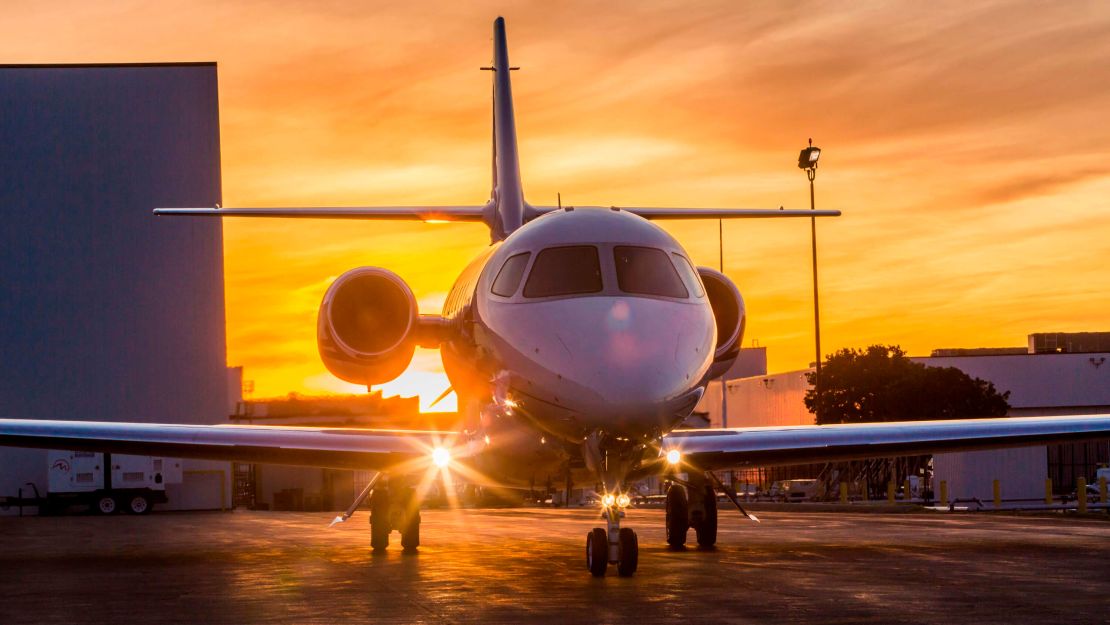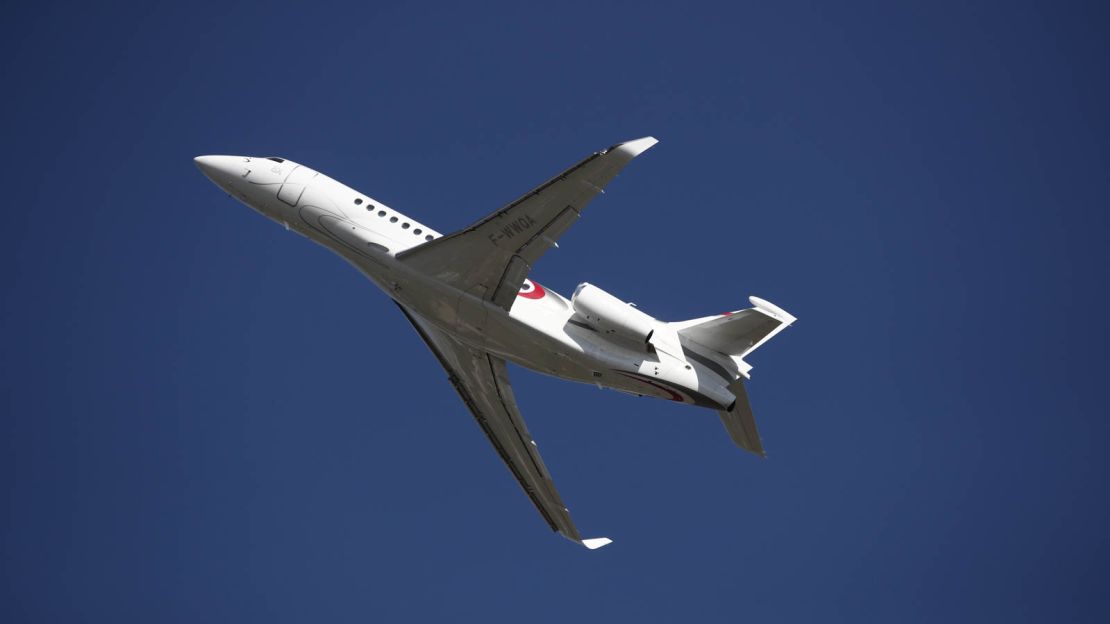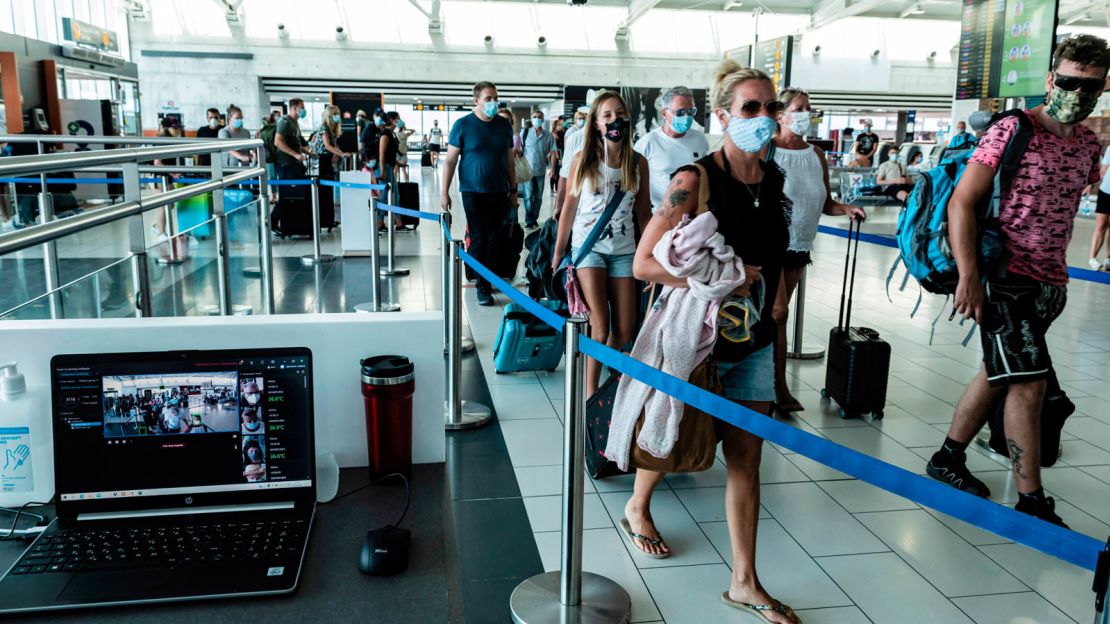These Covid-era days, fewer people want to sit on a plane literally rubbing elbows with strangers, so they’re looking for alternative ways to travel that minimize close contact.
For journeys where driving or taking a train are impractical, there’s another alternative that may actually be more accessible than most people think: flying a private jet.
While traveling by private aircraft may still be expensive, it’s no longer an exclusive privilege reserved only for the ultrarich and C-Suite business executives.
While chartering a private jet can cost more than flying in first class or business class, the personalized service can be worth the upgrade.
Here’s a quick look at what it costs to fly private, the different options available, and the extra benefits you can get.
How to charter a private jet
It’s possible to book private charters directly from companies such as BLADE, XO, and JSX. Through these services, travelers can browse through the various options then submit their details, after which a booking agent will make contact with a quote based on fleet availability.
The charter company may have another flight going to the same destination. So if the travelers is comfortable flying with strangers, a shared charter or a “book your own seat” reservation can be significantly cheaper than booking an entire private jet.

Another time-saving option for passengers with no loyalty to any particular service is to go through a charter broker who will use a database like Avinode to see available planes for the passenger’s route and travel times.
If going down this route it’s a good idea to vet the safety records of the charter company. The regulations with charter services may not be as stringent as with commercial airlines.
How much does private jet travel cost
No-frills private travel can cost as little as $100 for a one-hour hop on a business commuter jet or as much as $40,000 to have a plane to yourself for a trip across the United States.
Several variables determine how much flying privately costs, chiefly the size of the plane and the number of hours it’s used.
As a benchmark, the US-based Air Charter Service provides these hourly rental estimates for airplane rental in the United States in September 2020.
- Light jet (4 to 6 passengers): $4,000 to $5,500
- Medium jet (6 to 9 passengers): $5,500 to $9,500
- Heavy jet (16 to 19 passengers): $11,000 to $20,000
A shared charter service means the cost gets split with other travel parties, making private travel relatively more affordable.
The most expensive option is booking a one-way private charter with exclusive use of the plane.
Shared charters might cost $5,000 or less to fly across the United States. Chartering an entire plane can cost $35,000 for the same route.
A third charter option is “booking by the seat” on a small commuter plane that’s similar to flying in commercial business class. The seat can cost around $100 for short hops and close to $2,000 for a three-hour flight.
Here’s a closer look at how much these various charter flight booking options cost.
Book by the seat
The cheapest option is “booking by the seat” on a scheduled run on a plane that holds up to 30 passengers in a 2x1 seating pattern.
The seat can cost as little as $100 for short-haul flights, like Burbank to Las Vegas on JSX. Longer flights, such as New York City to Miami, might start at $2,400 with BLADE.
An upgrade to a premium fare may be needed to reserve a seat in advance and check in multiple bags.
Shared charters and private charters
One way to enjoy a more private experience that can be affordable is by booking a shared charter.
With this option, someone charters a plane and sells the empty seats to reduce their total costs.
It will involve flying with strangers, but there are far fewer passengers than commercial flights and the experience can be more luxurious.
Shared charters cost more than booking by the seat but are cheaper than booking an entire plane.
XO lets customers easily browse shared charters and one-way charters. Here are the price differences for two recent routes:
- Ft. Lauderdale to Oakland (Shared charter): $4,000
- Ft. Lauderdale to Salt Lake City (One-way charter): $20,900
Shorter one-way charters are not as pricey. One XO option lets passengers fly from Los Angeles to San Francisco for $4,990.
These flights may have additional service fees for on-demand booking conveniences or if the plane must remove snow and ice before a winter takeoff. Regular fliers may explore membership plans that have upfront charges but reduce incidental costs.
International travel

Chartering a jet for international travel is another option, but it will be more costly. Still, this may be preferred to get between Europe and the United States.
For example, a private charter quote using EvoJets between London and New York City costs as follows:
- Heavy Jet (up to 16 passengers): $76,400 to $86,900
- Ultra Long Range Jet (up to 18 passengers): $114,700 to $130,400
It’s also possible to book a round-trip flight for international charters. PrivateFly offers a London-New York-London private hire for $143,654. Another PrivateFly route is from Paris to Riyadh and back for $81,763.
Chartering a private jet for travel between Latin America and the United States may be necessary as commercial routes are limited. XO had a recent one-way charter offer from Miami to Medellin for $13,970.
Save money with empty legs
One fun way to fly privately is searching for “empty leg” flights.
Not every private jet you see in the air has passengers and might be repositioning. As empty legs are essentially non-revenue flights, it’s possible to book a seat for up to 75% off the normal charter rate.
It’s also possible to be the only passenger on the flight. Travelers should be advised that empty legs may not offer in-flight catering unless by prior arrangement.
Jet membership cards
For anyone planning on flying privately for at least 15 hours per year, buying a membership can be worth the upfront cost.
Travelers avoid the long-term commitments and hefty costs of having fractional ownership while enjoying more predictable charter costs and other privileges.
These cards can help secure fixed flight rates and have guaranteed availability with 24-hour notice.
Like elite airline status, it’s common for charter services to offer different membership packages. There are recurring annual fees and some services also charge an initiation fee and monthly fee.
XO offers four different membership options. The RISE tier costs $595 annually with no initial deposit. Some of the benefits include service fee waivers for two seats on shared charters and no service fees on private charters.
Frequent XO members can choose the highest tier Elite Access option. Fliers pay $1,000 per month, and there’s a $100,000 minimum initial deposit. It’s possible to choose seats on shared charters, free seats on empty legs, and a dedicated adviser.
Delta Private Jets is another program to consider for anyone who flies Delta Air Lines often. Card limits start at $150,000 but don’t have any annual dues or initiation fees. Benefits include fixed hourly rates, no aircraft repositioning costs, and Diamond Medallion Status at select Jet Card levels. Being a Delta Private Jets member also earns a 20% discount on select Delta fares when commercial travel is the better option.
For anyone who has the cash and anticipates flying at least 50 hours per year on private jets for the next few years, investing in fractional ownership could be better than buying a jet card.

Benefits of flying privately
Fewer high-risk contact points
The best reason to fly privately can be for reduced public exposure. It’s no surprise that private charter companies report seeing a significant rise in bookings versus last year.
A lot of fliers clearly want to avoid commercial air travel for obvious reasons.
Although some scientists say the odds of catching Covid-19 on an airplane are low, there can be as many as 700 touchpoints when flying commercial, according to GlobeAir, because of the need to progress through security, wait in the general terminal, and share a plane with many others.
Private jet travel may have as few as 20 touchpoints as most jets depart from a private terminal. The security screening process is quicker, and a full flight is typically limited to 15 other passengers. It’s also much easier to contact-trace when there are fewer passengers.
To further reduce contact, some charter services use removable plastic sneeze shields between seats.
Custom flight plans
Many private charter companies operate from convenient regional airports so travelers can avoid traffic jams and busy flight lines associated with commercial terminals – although that’s not so much of an issue at the moment.
Depending on travel budget, fliers can charter their own plane and choose their origin and departure points.
Personalized service
Many private jets offer luxurious personalized services that can make first-class look like flying in coach.
Fliers don’t have to arrive at the airport two hours before departure to ensure they have time to check bags and make it through security.
Once arriving at the private terminal, they can relax at the plane-side lounge, joined only by the other travelers on their flight.
Pets can fly
Private charters are more pet-friendly than flying commercial. If booking by the seat, passengers might only be allowed to bring a dog weighing up to 35 pounds that can sit on a lap, unless they buy a second seat.
If chartering the whole plane, furry friends can likely travel too with few restrictions. I once flew with my sister on her in-laws’ private charter and it was like Noah’s Ark.
Is private jet travel a fad?
It appears that private jet travel is going to be more common until the coronavirus pandemic situation improves.
The cost difference between flying privately and in the premium commercial cabin is competitive when fliers can book shared charters, empty legs, or grab a seat on a business commuter jet.
A lot of travelers want more peace of mind when they fly.
Being able to avoid the hassle and impersonal experience of commercial travel can be worth the premium price and services.
Because several charter companies are available, finding a daily route or requesting an option that works is possible.
Passengers only need to know their travel route and desired departure time for a personal travel advisor to find the best option.
Will virtual conferencing negatively affect the private jet industry?
Businesses are looking for ways to cut costs, and unnecessary business travel is an easy way to trim expenses.
Virtual conferencing and online trade shows will likely keep business travel from rebounding to its pre-pandemic levels. Many pivotal conferences are going virtual, including tech innovation showcase CES 2021.
However, some high-level deals cannot be made online. For instance, executives may want to tour a potential site or inspect work being done at other locations.
One hindrance can be the limited flight range of a single private jet. While there may be options to fly within the Americas or to Europe on a single flight, reaching Asia from the Western hemisphere is quite an undertaking.
“What we’re seeing is some business travel is coming to the private jet industry that would normally have been in the commercial world because there is confidence in flying with us,” Megan Wolf, COO of FlexJets, told Bloomberg Television.
Due to uncertainty with commercial air and the potential health risks of crowded public places, private jet travel will likely be more commonplace for business executives in the near term.
A recent Corporate Jet Investor’s poll of 500 private jet executives indicates that 92% of the respondents are optimistic about private jet travel in 2021.
Commercial airliners appear to have more to lose from virtual conferencing than private travel at this moment. As long as corporate balance sheets remain healthy and the pandemic doesn’t significantly worsen, private jet operators should have steady demand for the near future.
John E. DiScala, aka Johnny Jet, has traveled over 100,000 miles a year since 1995 and has visited over 70 countries. He and his website JohnnyJet.com have been mentioned thousands of times in major publications and he was named as one of Forbes’ Top 10 Travel Influencers.



